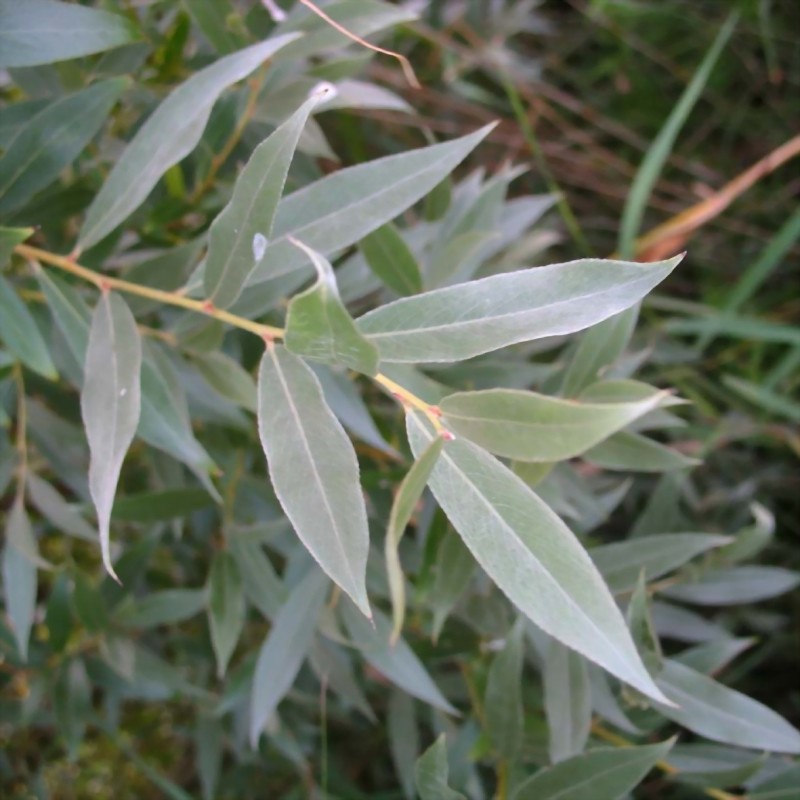Salix alba, the white willow, is a species of willow native to Europe and western and Central Asia. The name derives from the white tone to the undersides of the leaves. It is a medium to large deciduous tree growing up to 10–30 m tall, with a trunk up to 1 m diameter and an irregular, often-leaning crown. The bark is grey-brown and is deeply fissured in older trees. The shoots in the typical species are grey-brown to green-brown. The leaves are paler than most other willows because they are covered with very fine, silky white hairs, in particular on the underside; they are 5–10 cm long and 0.5–1.5 cm wide. The flowers are produced in catkins in early spring and are pollinated by insects. It is dioecious, with male and female catkins on separate trees; the male catkins are 4–5 cm long, the female catkins 3–4 cm long at pollination, lengthening as the fruit matures. When mature in midsummer, the female catkins comprise numerous small (4 mm) capsules, each containing numerous minute seeds embedded in silky white hairs, which aids wind dispersal.

